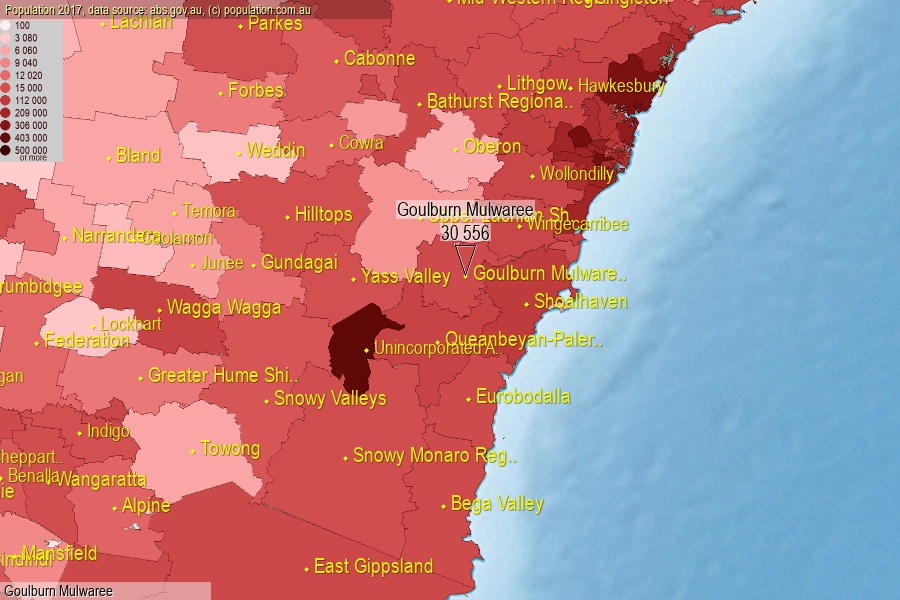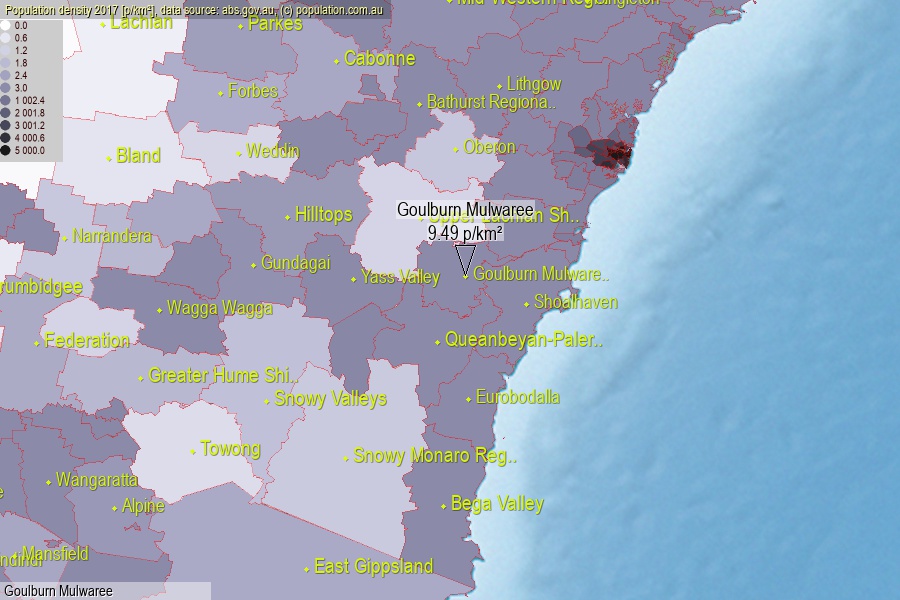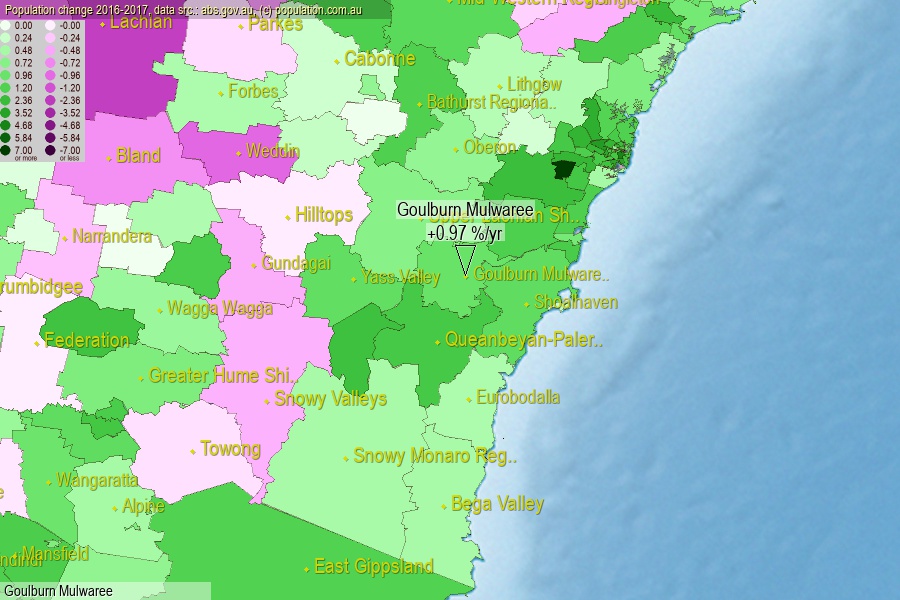 population.com.au
population.com.auLast official estimated population of Goulburn Mulwaree Area (as Local Government Area) was 30 556 people (on 2017-06-30)[2]. This was 0.12% of total Australian population and 0.384% of NSW population. Area of Goulburn Mulwaree is 3 220.10 km², in this year population density was 9.49 p/km² . If population growth rate would be same as in period 2016-2017 (+0.97%/yr), Goulburn Mulwaree population in 2025 would be 33 022. [0]



Click to enlarge. Goulburn Mulwaree is located in the center of the images.
Population [people], population density [p./km²] and population change [%/year] [2]
[1996-2001] +0.47 %/Y
[2001-2002] +0.47 %/Y
[2002-2003] +0.19 %/Y
[2003-2004] -0.06 %/Y
[2004-2005] +0.21 %/Y
[2005-2006] +0.30 %/Y
[2006-2007] +0.40 %/Y
[2007-2008] +1.35 %/Y
[2008-2009] +1.80 %/Y
[2009-2010] +1.55 %/Y
[2010-2011] +1.00 %/Y
[2011-2012] +1.29 %/Y
[2012-2013] +1.59 %/Y
[2013-2014] +1.02 %/Y
[2014-2015] +1.12 %/Y
[2015-2016] +1.50 %/Y
[2016-2017] +0.97 %/Y
[0] Calculated with linear interpolation from officially estimated population
[1] Read more about LGA and Australian Statistical Geography Standard (ASGS) on abs.gov.au
[2] Population data from Australian Bureau of Statistics (Population and density: 2017; change: 2016-2017)
[3] Digital Boundaries: Australian Statistical Geography Standard (ASGS) 2016.